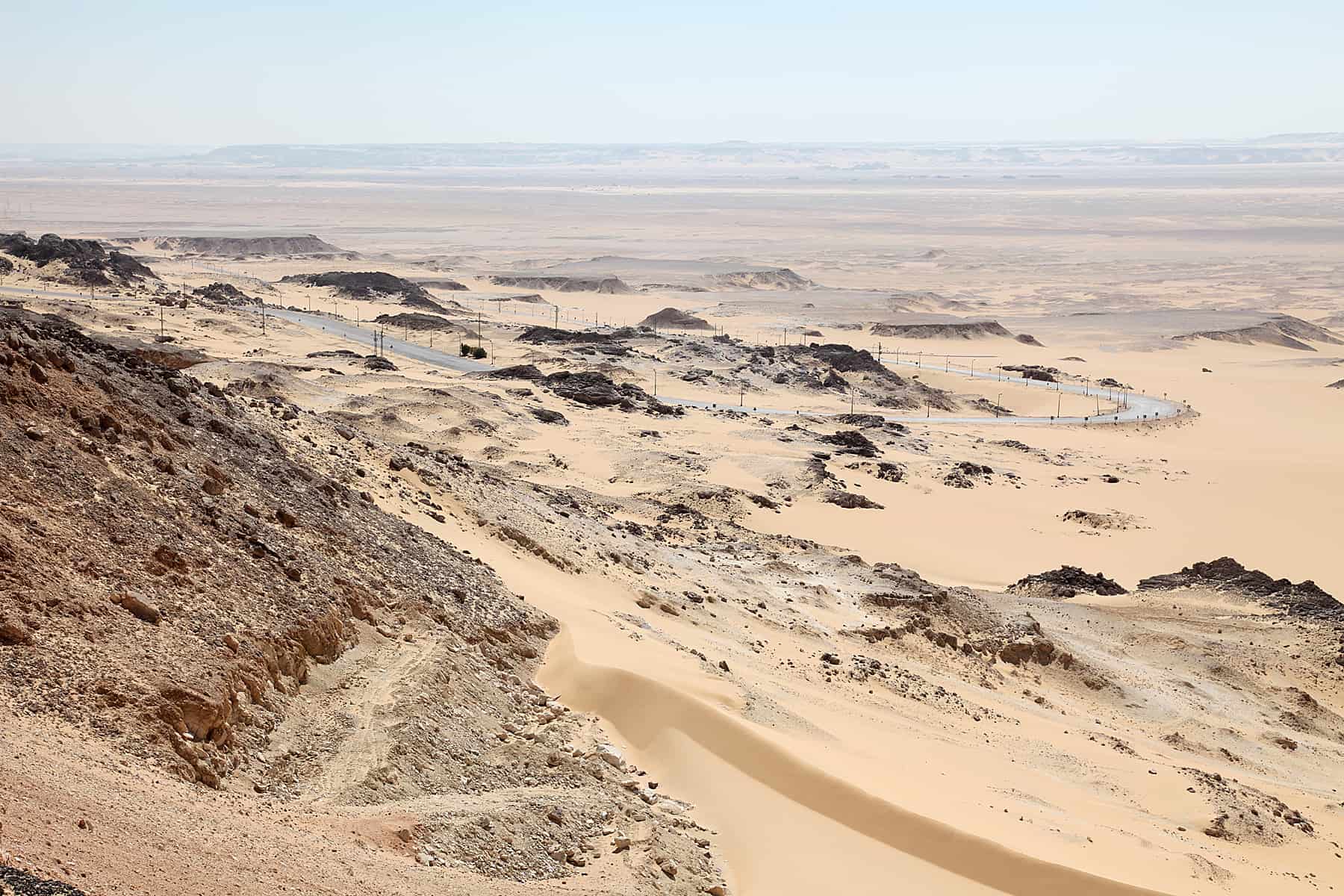A historic road linking Egypt to Sudan, even with the camel trade, starting at the end and ending at Imbaba in the Egyptian Giza Governorate. The road had a religious role with the movement of Sufi orders through it from West African countries, passing through Sudan and ending in Egypt.
The Arbaeen Road, or Darb al-Arbaeen, currently begins from Asyut in Upper Egypt and extends to the Kharga Oasis, then goes south, passing through the Selima Oasis and Bir al-Natrun, and continues until it reaches El-Fasher in western Sudan, and is crossed by caravans in forty days.
The historical importance of “Darb Al-Arbaeen” goes back to many years that history has known since the eighteenth century, crossing the Indian Ocean, South Asia, the Far East, and along the western coast of Africa, where Arab merchants who enriched that region established it by communicating with the inhabitants of the region who promoted their products and trade in that region. The period between gold, silver, ostrich feathers, perfumes, silk and spices.
Darb Al-Arbaeen also played an important role at the beginning of the eighteenth century when it was a crossing point for Hajj, as those coming from North and West Africa took this route before the Mamluk era until it became a forum for important cultural and historical interaction. Other than that, Darb Al-Arbaeen Road was used to bring the slave trade from Africa.
But there is no doubt that the growing ties between Egypt and West African countries led to the growth of important scientific and cultural ties through this path. History tells that Sultan Mansamos took advantage of his presence in Egypt and bought a number of books to provide the people of his country with an aspect of Islamic culture.
Darb Al Arbaeen for Religious Tourism
“Darb Al-Arbaeen” is known as the route of religious tourism, as it reaches Assiut and from there to Imbaba in Giza, from Giza to Sinai, from Sinai to Palestine, and even to Jordan and the lands of Hijaz, as well as the Ethiopians who used to come for pilgrimage to the Church of the Monastery of Muharraq in Assiut, as it is on the path of Darb Al-Arbaeen.
In ancient times, the winter and summer caravans began on this road in the period between September and April, when temperatures dropped in these months, and the demand for camels in Egypt, and for cotton clothing in Darfur and in the markets of West Africa increased.
Therefore, the “Darb Al-Arbaeen” road was a lifeline linking Egypt and African countries.



Comment (0)